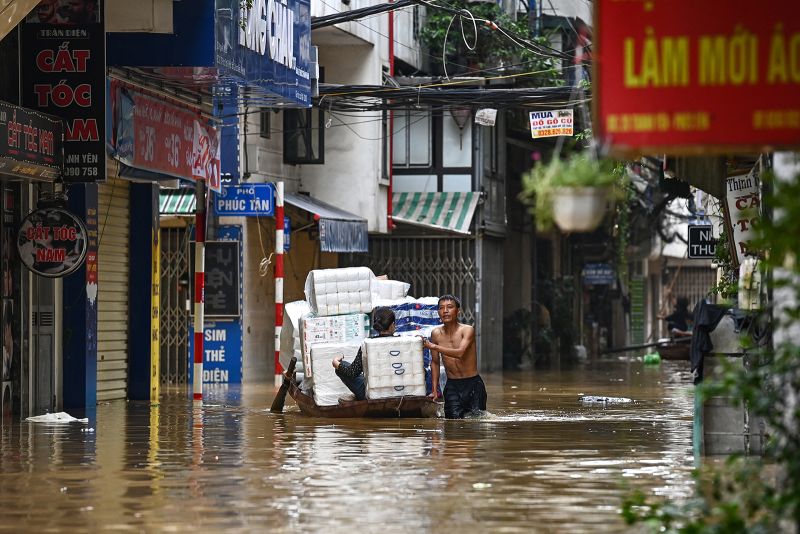
Typhoon Yagi’s Devastation Unleashed: 200 Fatalities and Counting in Vietnam
Typhoon Yagi, a severe tropical storm that made landfall in Vietnam, continues to ply its deadly course several days after its initial hit, bringing unparalleled destruction and despair to the country. The nation grapples to cope with the catastrophic aftermath that has so far resulted in nearly 200 fatalities.
Typhoon Yagi first slammed the coastal regions of Vietnam with merciless intensity and quickly moved inland, causing widespread destruction. The unrelenting showers and gusty winds resulted in near-total devastation in various regions of the nation. Homes and infrastructure were severely damaged, roads were washed away, and power supply haphazardly disrupted causing panic and chaos among the people.
What sets Typhoon Yagi apart is the unending deluge that followed its landfall. The torrential rains have caused a number of rivers across the country to burst their banks and mercilessly invade the nearby villages and towns. Massive flows of water inundated thousands of homes, wiping out entire communities and leaving a trail of destruction behind that will take years to recover from.
The agricultural sector faced an extreme blow as Yagi ravaged farmlands, leading to a massive loss in crop production and livestock. Rice fields, the cornerstone of Vietnam’s agriculture, were heavily affected. This is predicted to significantly set back Vietnam’s economy as the country is one of the top rice exporters globally.
The Vietnamese government mobilized their disaster response team promptly in an attempt to control the situation and limit the escalating death toll. Thousands of people have been evacuated from their homes and rehoused in makeshift shelters. Despite their efforts, the increased rainfall has made rescue operations exceedingly difficult.
What’s more, healthcare facilities, already stretched thin due to the ongoing pandemic, are facing unprecedented pressure. The flooded areas pose a grave risk of waterborne diseases, while the limited accessibility to clean water and sanitation further exacerbates the healthcare challenge. The nation’s health system is struggling to cope with the dual challenge of managing the onslaught of Covid-19 alongside the growing number of typhoon-related injuries and illnesses.
In addition to immediate disaster relief, the need for emotional and psychological help for the survivors is of paramount importance. The scale of destruction and loss has led to severe trauma among the affected communities, with many struggling to process the magnitude of the devastation.
Internationally, humanitarian aid is being mobilized towards Vietnam. Many non-governmental organizations, volunteer groups and governments worldwide are stepping in to provide relief materials such as food, clean water, medical supplies, and financial help. Efforts are also being employed to buffer the long-term impact of the Typhoon on Vietnam’s economy and build the capacity to handle future disasters effectively.
In a broader perspective, Typhoon Yagi’s merciless onslaught serves as a grim reminder of the escalating climate changes. The increased frequency and severity of such devastating weather events call for the imperative need for a stronger global response and adaptation strategies to climate change.
These trying times have brought forth innumerable stories of courage, resilience, and unity amongst the Vietnamese people. Their spirit in the face of monumental crisis sets a precedent for the world at large. As we share their grief, we stand in awe at their indomitable spirit as they brace to build back their homes, lives and their nation on the whole.
